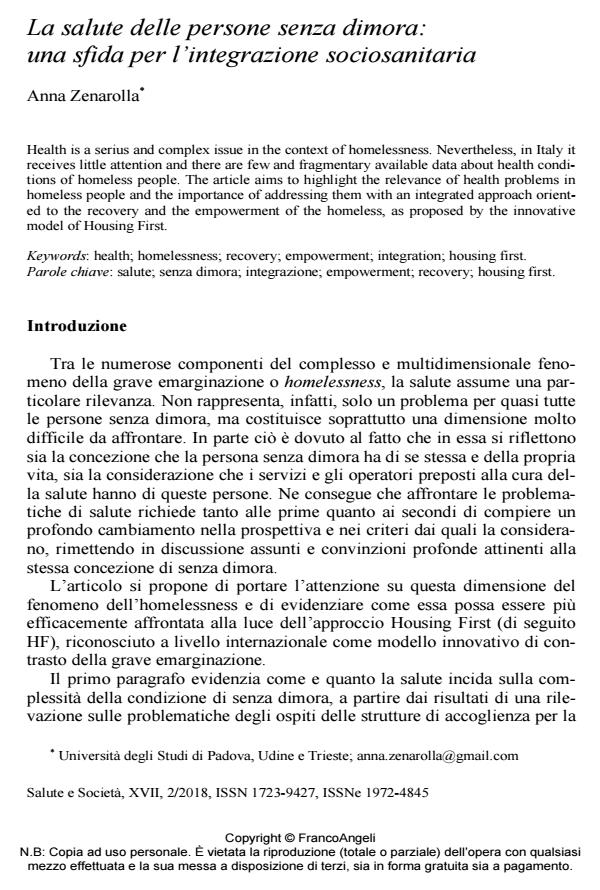La salute delle persone senza dimora:una sfida per l’integrazione sociosanitaria
Journal title SALUTE E SOCIETÀ
Author/s Anna Zenarolla
Publishing Year 2018 Issue 2018/2
Language Italian Pages 15 P. 151-165 File size 90 KB
DOI 10.3280/SES2018-002011
DOI is like a bar code for intellectual property: to have more infomation
click here
Below, you can see the article first page
If you want to buy this article in PDF format, you can do it, following the instructions to buy download credits

FrancoAngeli is member of Publishers International Linking Association, Inc (PILA), a not-for-profit association which run the CrossRef service enabling links to and from online scholarly content.
Health is a serius and complex issue in the context of homelessness. Nevertheless, in Italy it receives little attention and there are few and fragmentary available data about health conditions of homeless people. The article aims to highlight the relevance of health problems in homeless people and the importance of addressing them with an integrated approach oriented to the recovery and the empowerment of the homeless, as proposed by the innovative model of Housing First.
Keywords: Health; homelessness; recovery; empowerment; integration; housing first.
Anna Zenarolla, La salute delle persone senza dimora:una sfida per l’integrazione sociosanitaria in "SALUTE E SOCIETÀ" 2/2018, pp 151-165, DOI: 10.3280/SES2018-002011